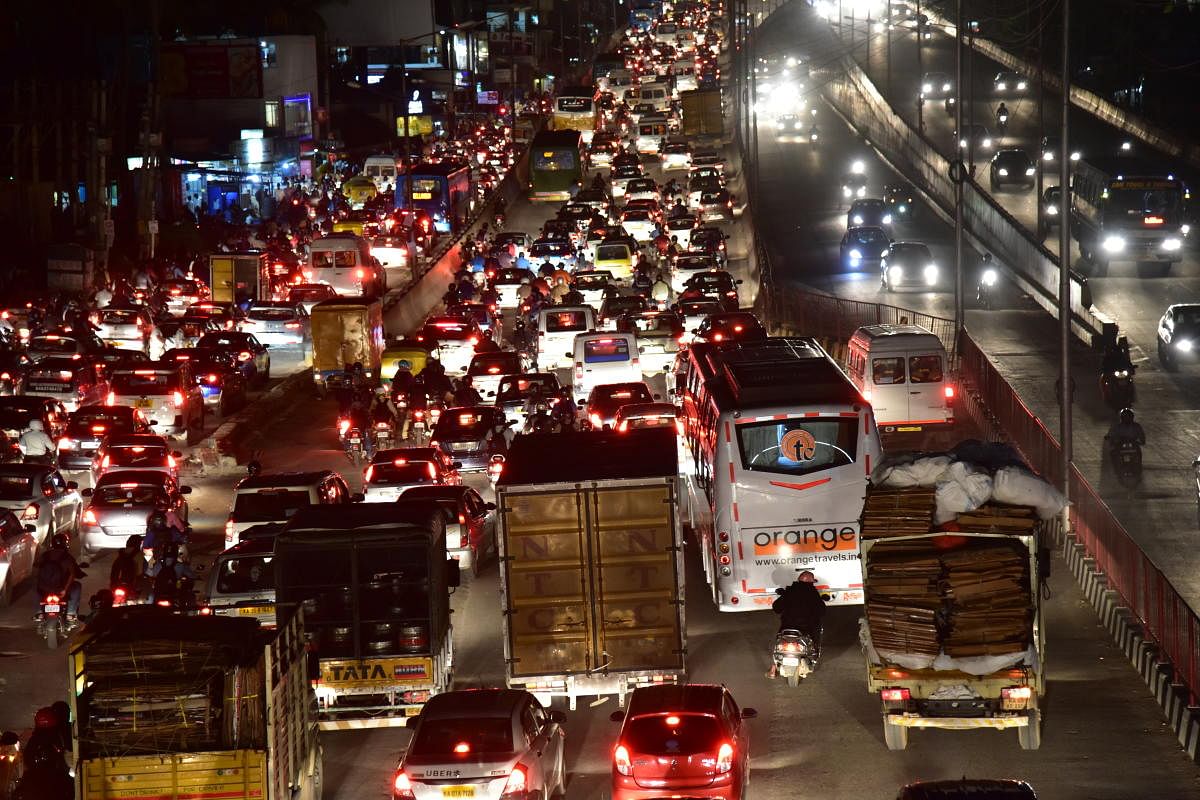If the Peripheral Ring Road (PRR) project takes a strip development approach, it is bound to meet the same fate as the Outer Ring Road (ORR), now trapped in a twister of traffic woes. This warning by the expert committee on the BBMP restructuring suggests a way out: area development.
Simply put, the ORR was designed and executed with no concern for the areas around. "The Indian Road Congress (IRC), in its standards for Urban Roads, for example, gives a clear classification of roads which are 'arterial, sub-arterial, collector and local streets'. These hierarchies are largely missing around the ORR," notes the panel in its report.
Strip development of ORR did not allow any "lower level of traffic mobility for collection and distribution purposes". Also missing are "entrances to business and residences", the report notes. This flawed approach will explain why decongestion mechanisms are so tough to even conceptualise. A Namma Metro line from the Silk Board Junction to KR Puram is the only retrofit solution in the pipeline.
Now stuck in funding issues, the PRR project's costly land acquisition process could be addressed through an area development approach. This implies lower compensation in monetary terms, but the land loser gets back a portion of the developed land that is valued much more than the piece s/he lost to the project.
Elaborating on this, the report says: "The PRR, with its alignment falling under 78% agriculture land use, 21% under residential land use and remaining under commercial or mixed-use, should use a hybrid model of an appropriate mechanism for land assembling. The land pooling and readjustment model could be used to readjust the land required for the road's alignment in greenfield areas while ensuring area development in its impact area."
In built-up areas, the expert panel notes, the project could adopt a cluster redevelopment approach and the joint development model in difficult stretches where the private sector can assist in land assembly.
Area development: The Ahmedabad model
To illustrate the land pooling and readjustment model, the expert panel suggests the Town Planning Scheme (TPS) executed in Ahmedabad.
Here's how it works: "This 'partners in development' model brings together a group of landowners who voluntarily pool their land/plots for development. The plots, after deduction of land required for roads and other public amenities, are reconstituted and distributed back to the owners."
The government agency retains about 60% of the land while the landowner gets back about 40% of the reconstituted land. "Infrastructure provisions are provided by the government agency in the scheme area and the landowner benefits from improved services and post-development land value gains. The cost of land development under this scheme is partially or wholly financed through betterment levies and through sale or mortgaging of plots obtained through the scheme by the agency."
